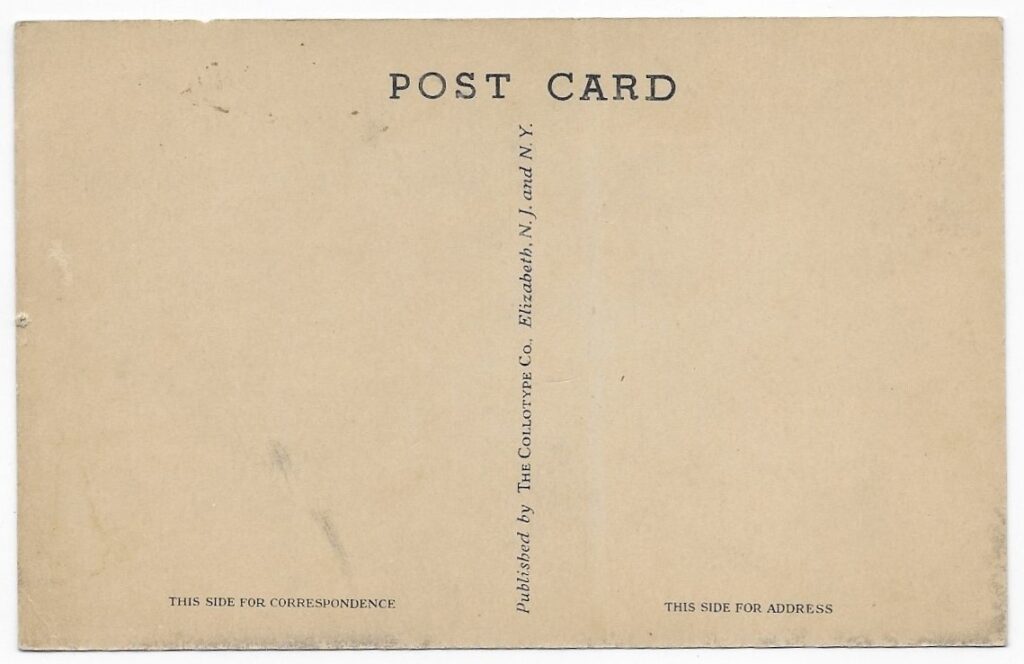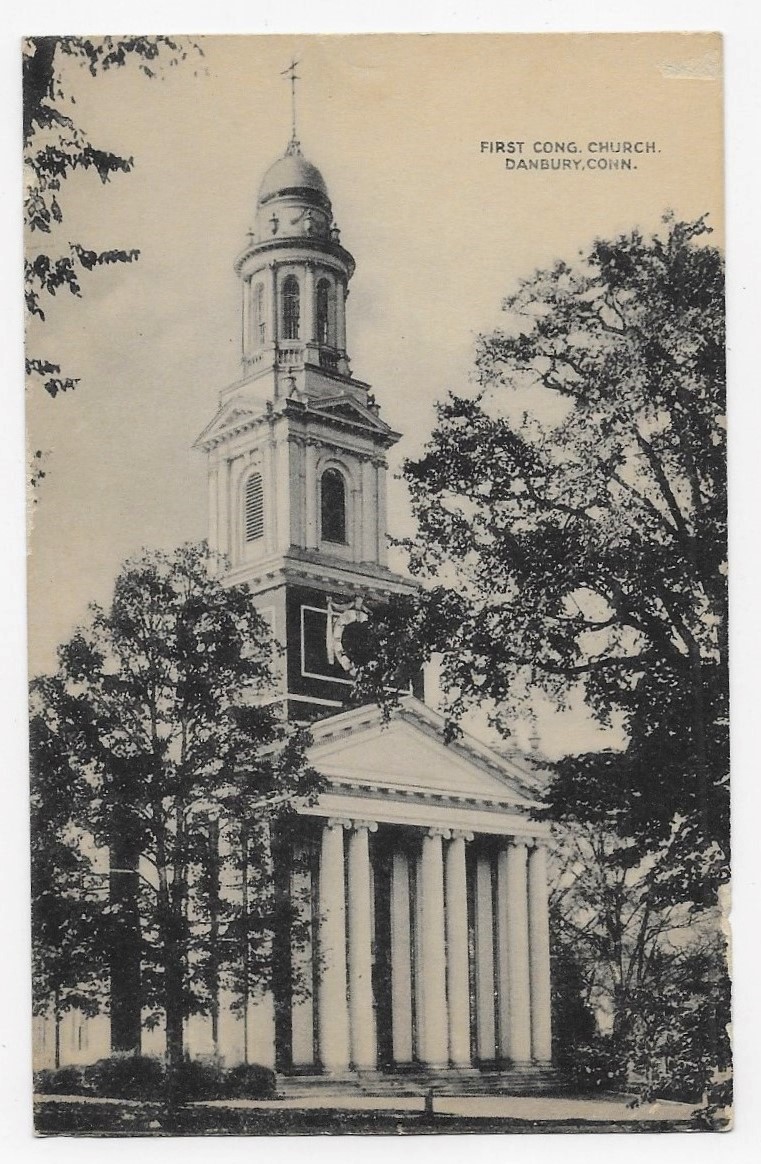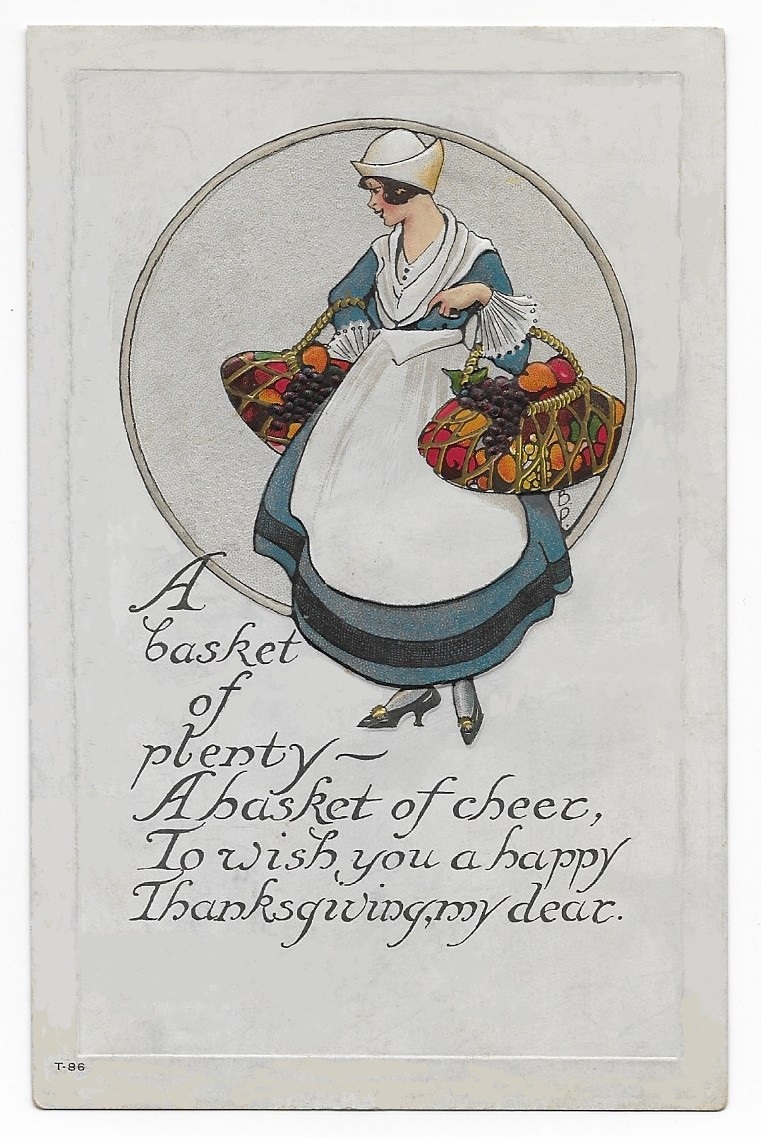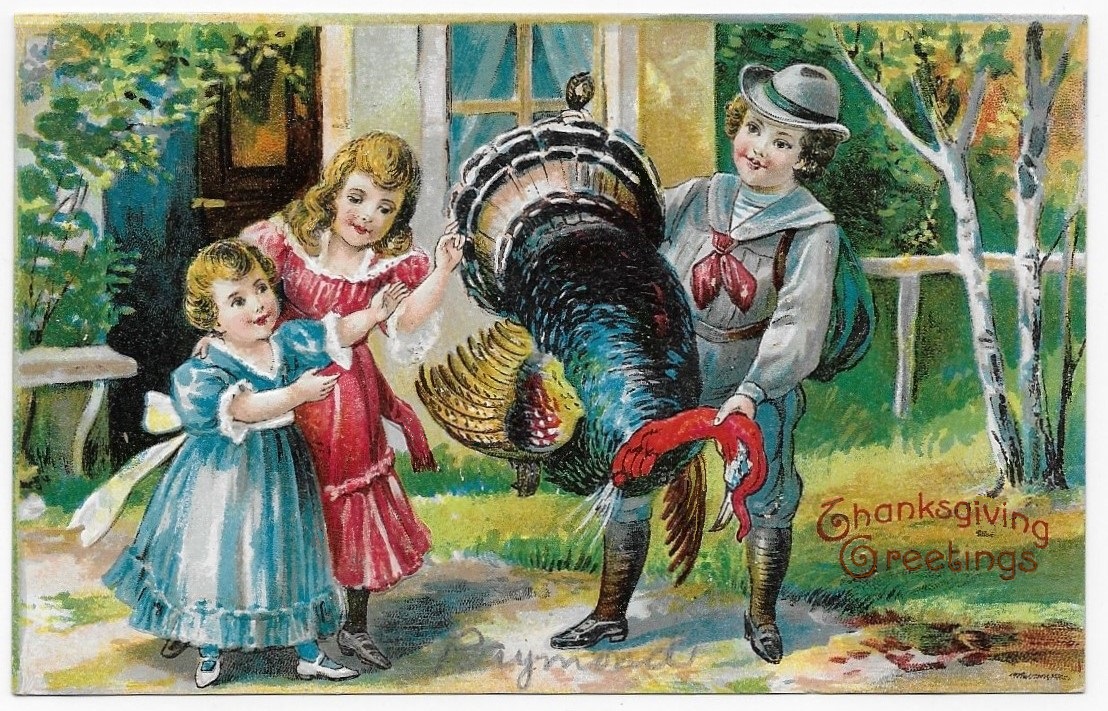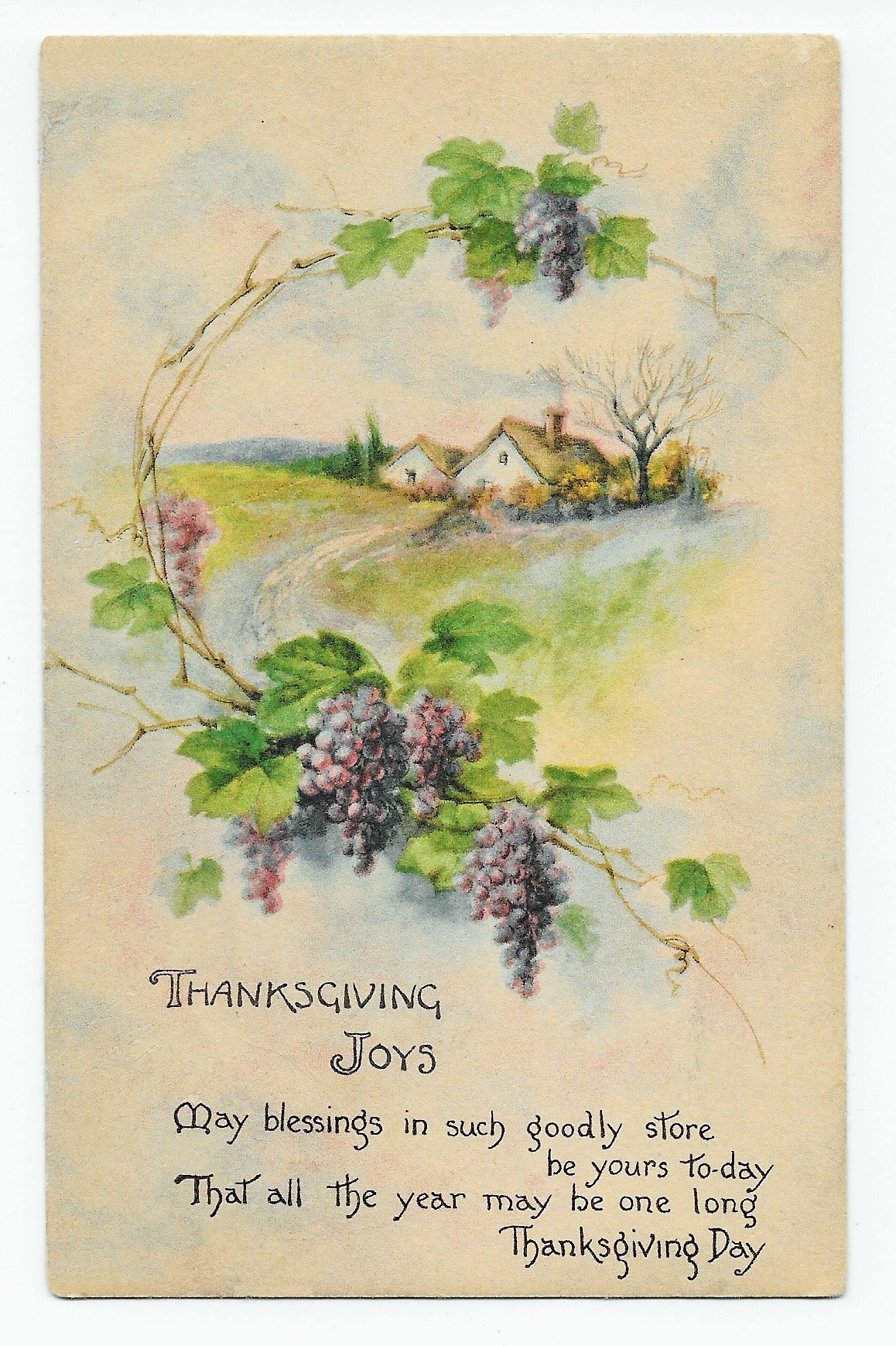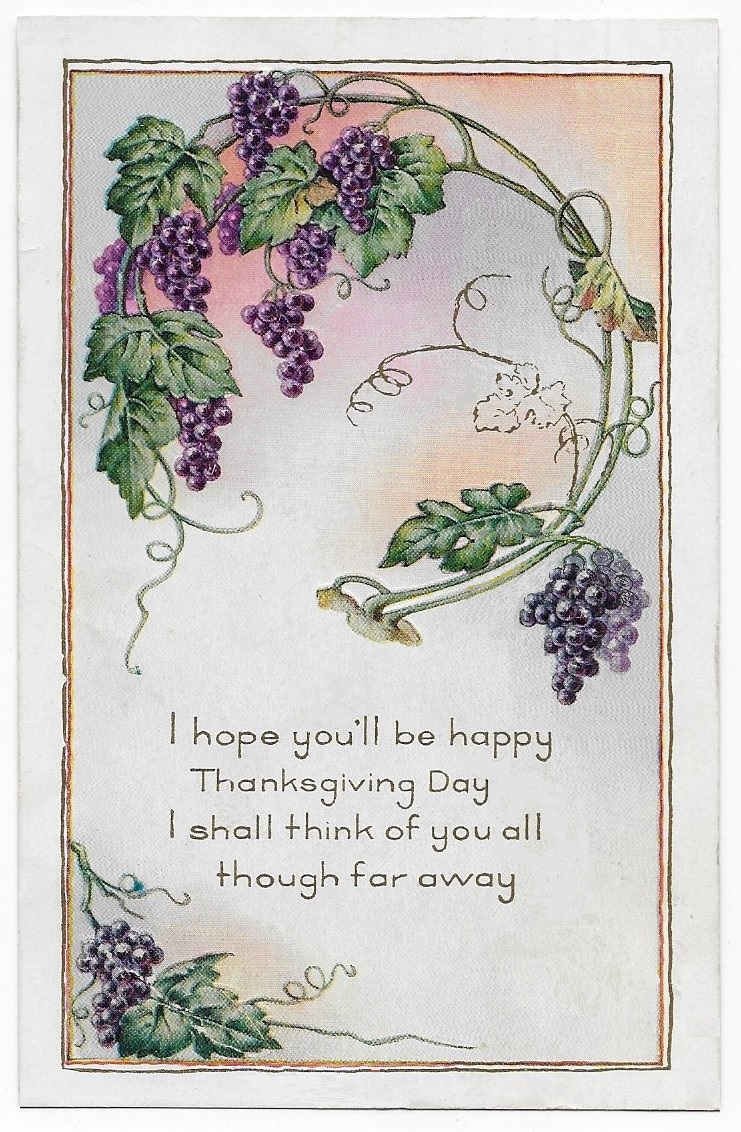The first European inhabitants of Danbury were a group of farmers who moved to this area of southwest Connecticut from Norfolk in 1685.
This agricultural community grew up around the intersection of two trails – the north-south route through the Housatonic River valley, and an east-west trail from the Connecticut River Valley to the Hudson River.
The first public building in Danbury was the Congregational Church.
The English separatists (both Pilgrim and Puritan) who settled New England established community churches that were Congregational in stye.
This meant that each congregation was self-governing in matters of ordination and leadership, finances, and discipline.
(Although in many places, the civil authority limited the religious observances and expressions of the people.)
The religious history of New England is fascinating and instructive, but beyond the scope or a postcard story.
Today, most Congregational Churches are affiliated with the United Church of Christ – as is the First Congregational Church of Danbury.
Danbury became a manufacturing center with the coming of the railroads, and was the center of US hat-making until the mid-20th century.
Fortunately, a large Historic District protects an amazing variety of commercial and public buildings (including this church) in the downtown area.
Today, the city is the commercial hub of western Connecticut and an outer-ring commuting suburb of New York City -only 50 miles to the southwest.
(Anyone who leaves Grand Central Station in early morning is familiar with the flood of commuters exiting the Connecticut trains on the Metro-North rail lines.)
https://en.wikipedia.org/wiki/Danbury,_Connecticut
+ + + + + + + +
The structure in the photograph is the fifth meetinghouse for the “First Congregational Church”.
Designed by the firm of Howell & Stokes, this building was dedicated in 1909.
I believe that the postcard photograph was made at that time.
The postcard was printed and published by the Collotype Company of Elizabeth, NJ and New York.
